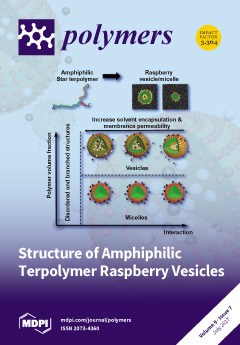We report the synthesis of two novel binuclear Pd–diimine catalysts and their unique behaviors in initiating “living” polymerization of ethylene and 1-hexene. These two binuclear catalysts, [(N^N)Pd(CH
2)
3C(O)O(CH
2)
mO(O)C(CH
2)
3Pd(N^N)](SbF
6)
2 (
3a:
m = 4,
3b:
m = 6) (N^N≡ArN=C(Me)–(Me)C=NAr, Ar≡2,6–(
iPr)
2C
6H
3), were synthesized by simply reacting [(N^N)Pd(CH
3)(N≡CMe)]SbF
6 (
1) with diacrylates, 1,4-butanediol diacrylate and 1,6-hexanediol diacrylate, respectively. Their unique binuclear structure with two identical Pd–diimine acrylate chelates covalently linked together through an ester linkage was confirmed by NMR and single crystal XRD measurements. Ethylene “living” polymerizations were carried out at 5 °C and under ethylene pressure of 400 and 100 psi, respectively, with the binuclear catalysts, along with a mononuclear chelate catalyst, [(N^N)Pd(CH
2)
3C(O)OMe]SbF
6 (
2), for comparison. All the polyethylenes produced with both binuclear catalysts show bimodal molecular weight distribution with the number-average molecular weight of the higher molecular weight portion being approximately twice that of the lower molecular weight portion. The results demonstrate the presence of monofunctional chain growing species resembling catalyst
2, in addition to the expected bifunctional species leading to bifunctional “living” polymerization, in the polymerization systems. Both types of chain growing species exhibit “living” characteristics under the studied conditions, leading to the simultaneous linear increase of molecular weight in both portions. However, when applied for the “living” polymerization of 1-hexene, the binuclear catalyst
3a leads to polymers with only monomodal molecular weight distribution, indicating the sole presence of monofunctional chain growing species. These two binuclear catalysts are the first Pd–diimine catalysts capable of initiating bifunctional ethylene “living” polymerization.
Full article






